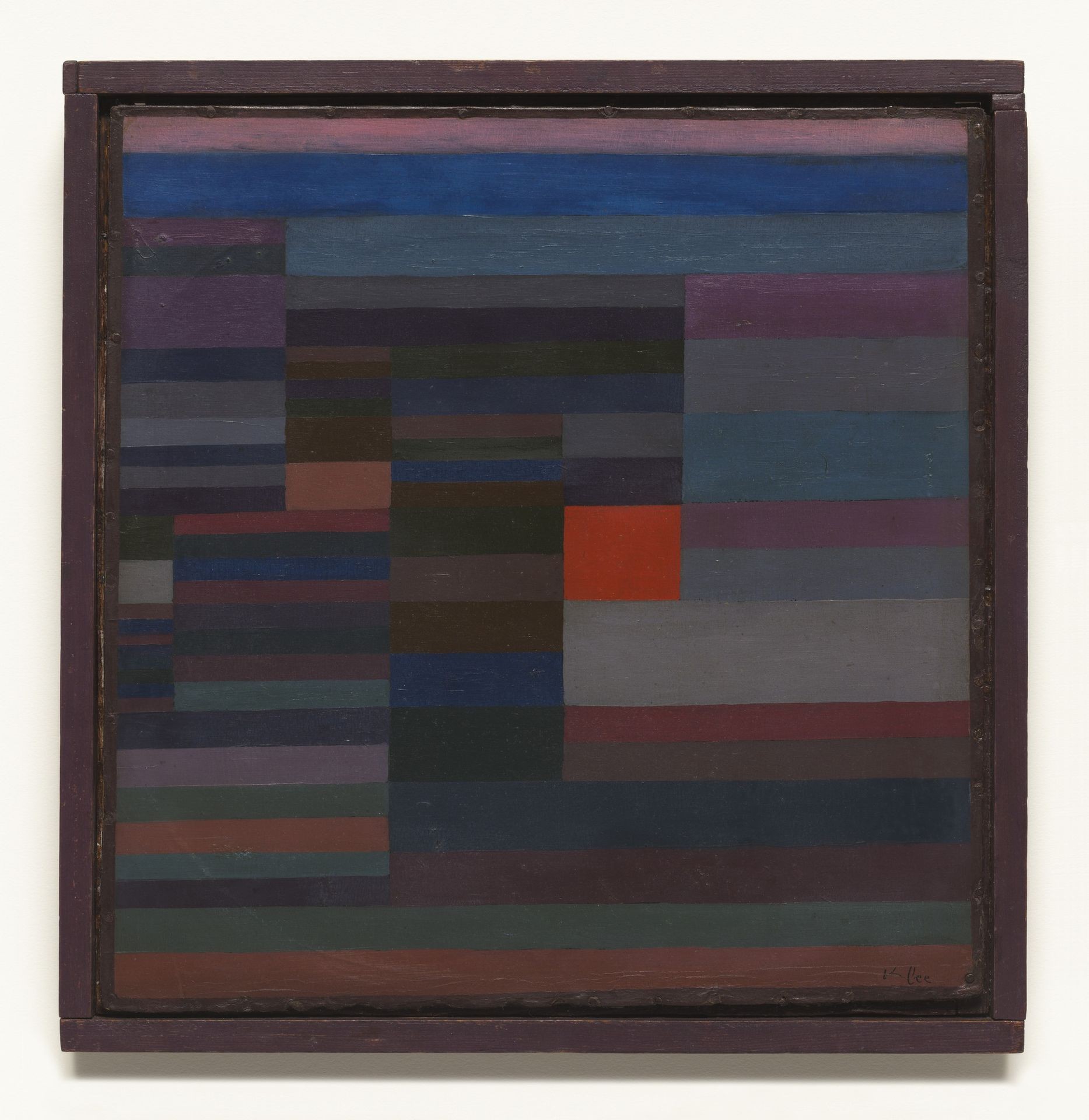Paul Klee painted Fire in the evening. Fire in the Evening shows Klee’s interpretation of the Nile Valley and the vast farmland that he saw on the trip. In the picture, there is a red square surrounded by brown, green, purple, and blue rectangles. The whole painting is distributed into lots of rectangles. The entire picture is filled with color blocks to show the structure and geographic formation of the surrounding environment. The focal point of the painting (the fire represented with the purest red)Visually showed as many lattices with different sizes and colors, the main subject, or the focal point of the painting the fire, the place where it uses very red color compared to other colors.
In my opinion, the artwork is about a fire on a peaceful evening in the countryside. I personally really like this painting. This work reminds me of a childhood experience, of the sunset in the countryside farmland and the animals that surrounded us. In Paul Klee's work, the painting is full of the color blocks, not much negative space. This makes the viewer lose focus, and after you look at a piece for a long time, you will get aesthetic fatigue. If there were more negative space, it would allow the viewer to focus more on the fire and not get fatigued by the color block.
After researching this painting, I found an interesting story about Klee. Paul Klee is a German citizen born in Switzerland. He was an artist, teacher, writer, and painter. He taught at the Bauhaus (an art school known for its emphasis on modernism and combination of craft and fine arts) and wrote a book about color theory. Paul Klee was born on December 18, 1979. In 1905 Klee started experiments with drawing and etching techniques. In 1914, he visited Tunis and completed his first abstract painting In the Style of Kairouan. He joined Der Blaue Reiter (The Blue Rider) group, formed in 1923 by Kandinsky. The painting was finished in 1929 after he was inspired by a trip he went on in the winter of 1928-1929. Klee did not travel much; he made the most of his few trips abroad. In December of 1928, he fulfilled a long-standing desire to see the Pharaoh’s monuments, by making a month-long trip to Egypt. Once the viewer is aware that the artist recently saw the pyramids, the triangular forms in his work take on a new meaning, triangular shapes that appear in his work immediately after the journey take on a new meaning. They are analog images that have been reduced to their simplest formal elements. In 1933 Klee began having scleroderma symptoms, which made it extremely difficult for him to paint. Klee died on June 29, 1940. Fire in the evening with the Death and Fire (One of his last panting from 1940). Evening represents the end of the day, in Klee’s works, fire and death are always connected. Perhaps after the tour in Egypt, he sees the powers of death, the end of the day and the fire strengthen he’s emotion. And he showed it abstractly and using simple shapes.
Paul Klee
Title : Fire in the Evening
Date : 1929
Material : Oil on cardboard
Dimension : 13 3/8 x 13 1/4" (33.8 x 33.3 cm)
Museum of Modern Art, New York

